Find of a Lifetime: 3,106-Carat Diamond Worth US $2 Billion Takes Its Place in History
Created an unimaginably distant time in the past, diamonds are the most coveted and valued of precious stones. The story of the discovery and destiny of the Cullinan diamond, to this day the largest gem-quality diamond ever found, is one to be marveled at, just like the staggering array of gems that were cut from it.
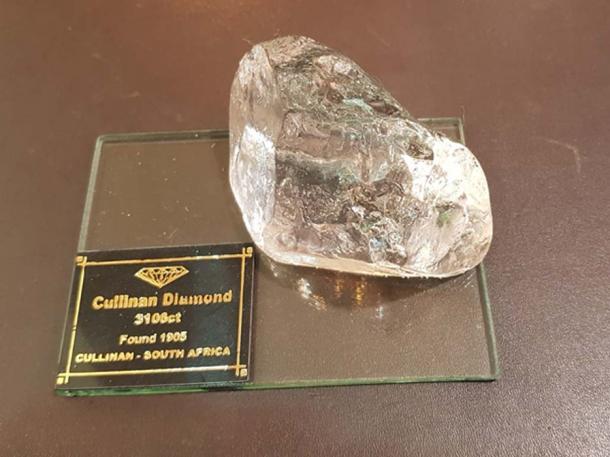
The 3106-carat Cullinan diamond, uncut (Cullinan Mine Archives
Vulcan strikes
About one and a half billion years ago, Vulcan, the blacksmith of the gods, struck a spark on his anvil, deep in the bowels of a sleeping volcano in Southern Africa. The result was a spectacular display of fireworks, when the earth was blasted up a subterranean chimney and a fountain of rock gushed out twelve miles (twenty kilometers) up into the sky literally showering diamonds, embedded in kimberlite rock, down to earth.
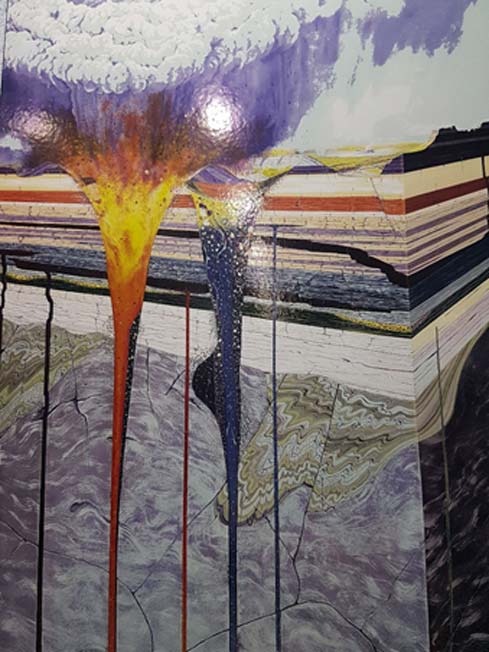
The subterranean chimney shooting up earth and diamonds in an explosion. (Cullinan Tourism and Heritage Centre)
Less than one percent of volcanoes on earth, are diamond bearing. Under pressure of a volcanic heated explosion, carbon crystalized into diamonds, captured in kimberlite rock. Exposed to the elements of the weather, eroded by rain, wind and sun, the kimberlite crumbled and the diamonds were freed. Some washed into rivers and streams and found their way thousands of miles away to the west coast of Africa, but many lay untouched for millennia within the perimeter of the volcanic crater.
The Great Trek
By 1836 many inhabitants of the Cape colony were fed-up with British rule and decided to hitch their ox-wagons, cross deserts, mountains and rivers to find the proverbial Canaan of Africa, where they could farm in peace and establish their own independent republics. The first family to arrive in the vicinity of the volcano, was the Minnaar family, who named their farm Elandsfontein, probably in honor of the multiple eland antelope species that still roamed these lands. Soon enough the Minnaar children were picking up alluvial diamonds in the vicinity of the erupted volcanic pipe.

They hitched their ox-wagons and trekked (Public Domain)
Minnaar’s eldest son was not cut out to be a farmer and in 1896 he sold the northern section of the farm to a man called Willem Prinsloo for £570. Now Prinsloo had previously owned a farm on the Witwatersrand, but soon gold was discovered in this area. From all over the world people swarmed to the Witwatersrand. The influx irritated Prinsloo terribly as they were invading his land. He sold up, trekked north and bought Elandsfontein, not knowing he had just bought one of the richest diamond fields in the world. Perhaps Prinsloo was an incarnation of King Midas and everything he touched turned into gold. All that glitters is not gold, and in this case, it was diamonds.
Don’t even get off that horse
Thomas Cullinan had bought another farm in the vicinity, called Fransport. One day, Cullinan encountered a prospector called Percy Tracy, who bragged with a 3-carat blue-white diamond, he kept in his pocket. When Cullinan asked him where he got the diamond, Tracy told him about the farm Elandsfontein, but warned Cullinan about the feisty owner, who could not tolerate trespassers on his land. Despite the warning Cullinan sent an emissary to the farm. Tired and dusty he arrived at the farm house, expecting hospitality, but Zeus’ policy of filoxenia apparently did not apply to Prinsloo, for the emissary found himself staring down the barrel of a shotgun and Prinsloo threatening him not to even get off his horse. The emissary turned the horse around. As Prinsloo turned his back on his good fortune, Tyche the goddess of good fortune, turned her face from Prinsloo, and the third goddess of fate, Antropos, cut his life’s thread. Prinsloo crossed the Stix and joined Hades, shortly after he had chased Cullinan’s emissary from his land.
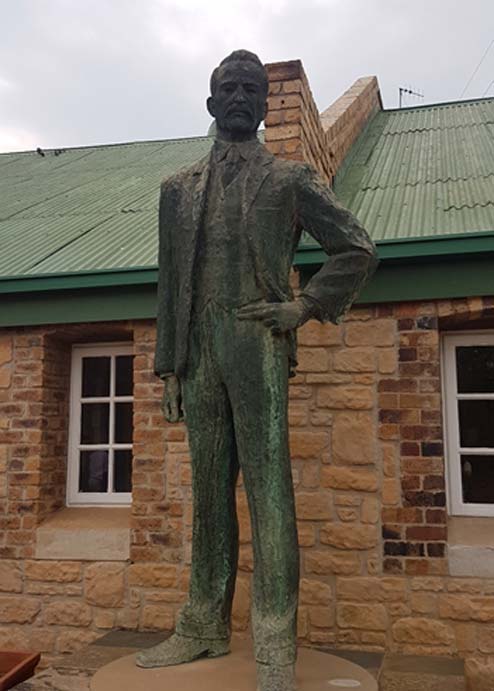
Statue of Sir Thomas Cullinan at Petra mine. (Image: Micki Pistorius)
War casts its dark shadow on the land
Gold was to be the curse of the independent farmers of the Boer republics. At the end of the nineteenth century, the gold on the Witwatersrand was the motivation for the British to annex the Republics of the Transvaal and the Orange Free State and in 1899 the Anglo Boer War broke out. During the war, the British had a policy of scorched earth, where they set the farmsteads of the Boers alight and interred the women and children in concentration camps, to force the Boers to give up the fight. On 31 May 1902, the Peace of Vereeniging was signed.
The Minnaar and the Prinsloo families returned to their farms, but were devastated to find only burnt ruins, where their homes had once been. Tyche bestowed her favour to Thomas Cullinan, her new favourite. Cullinan returned to Elandsfontein, but this time he had a clever plan. He requested the Prinsloo’s to grant him permission to allow his cattle to graze on the land. They agreed. A short while later, he informed them that one of his cattle had died due to the dreaded anthrax disease and that he had to bury the animal. Fearing for their own stock, they agreed. Cullinan took his spade and began digging. It was no ditch for a dead animal and the favourite of the goddess of fortune soon found what he was looking for – the kimberlite source of diamonds.
He put in an offer to purchase the “farmland” for £5200 and on 1 December 1902 he registered the Premier (Transvaal) Diamond Mining Company. Operations commenced in 1903. In 1903 the remaining portion of the farm was sold to Premium Mine. Prinsloo would have turned in his grave, for soon a village and compound housing the miners, sprung up on his farm.
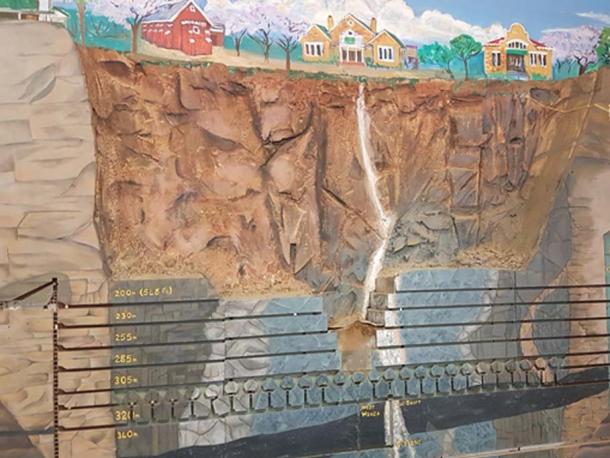
The little white cross at the top right hand, beneath the gabled house, indicates where the Cullinan diamond was embedded in the rock. ( Cullinan Tourism and History )
The diamond comes to light
Embedded in the edge of the crater, not far from the surface, laying somnolent for more than a billion years, was the biggest diamond the world had ever seen. A diamond destined to change history. One fine sunset on 25 January 1905, Mr Fred Wells, the pit manager was observing miners finishing their work for the day. Mining in those days consisted of miners using picks and shovels and hauling the soil by cocopan. As his eyes glided over the workings, a last ray of sunlight caught a rock and glittered. Wells took out his pocket knife and eagerly hacked at the rock. At last the diamond was finally freed from its rock casing. It was so big, Wells could not even wrap his hand around it. The diamond weighted 3106 carats (621 grams) and measured 4 by 2 ½ by 2 inches (10cm by 6.3 by 5 cm)
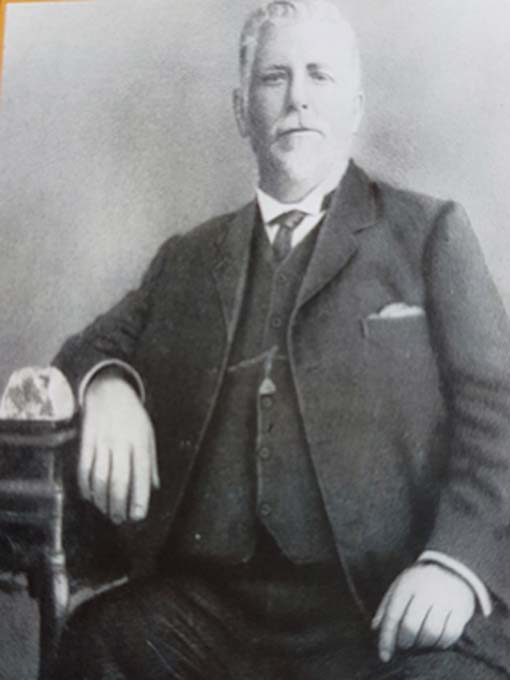
Fred Wells with the diamond (Image: John Lincoln)
An interesting fact is the source of the term carat. The seed in the pod of the Carob tree (Ceratonia siliqua) is the size of one carat. An average carob seed weighs about 3 1/3 grains, just over 200 milligrams. One carat is precisely 200 milligrams. Carob became carat in French.
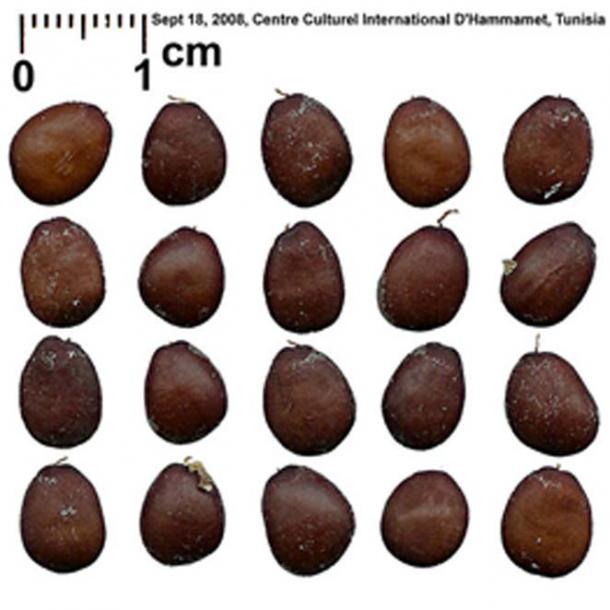
Seeds of the Carob tree. ( CC BY-SA 3.0 )
Mr William McHardy, the first general manager of the mine, informed Thomas Cullinan of the find. When Cullinan had bought the farm, he promised his wife he would one day give her the largest diamond in the world. However, Vulcan had bigger plans for his stone. In 1910, when Cullinan was knighted, he gave his wife a necklace with more than 200 diamonds including nine rare blue diamonds, to make up for it.
For almost two years, Cullinan could not sell the diamond. On the political front General Louis Botha became the prime minister of Transvaal and General Jan Smuts became the Colonial Secretary. Between them, they owned 40% of the Premier Transvaal Diamond Mine Company. They bought the diamond for £150 000 (around $750 000 at the time) and presented it to King Edward of England. Why would the defeated Boer generals give such a national treasure to the King of England? Because the conquered needed the goodwill of the victors to rebuild their country. It is rumoured that the diamond was mailed as a parcel.

Nine stones split from the original diamond ( Public Domain )
The King entrusted the rough diamond to be cut by the Asscher brothers of Amsterdam. Joseph Asscher fainted when we saw the size of the diamond. The diamond was cut into nine stones.
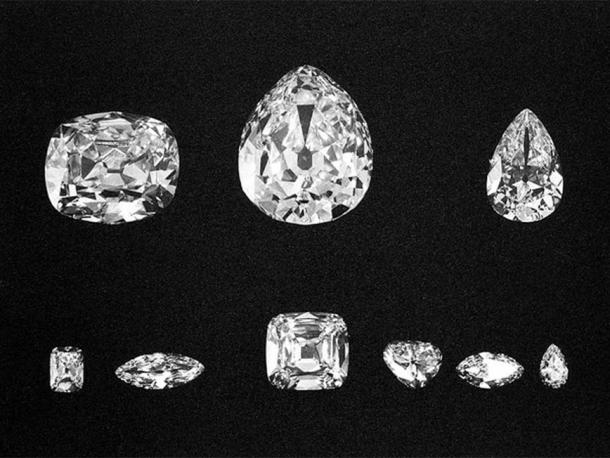
The nine major stones. Top: Cullinans II, I, and III. Bottom: Cullinans VIII, VI, IV, V, VII and IX. ( Public Domain )
The largest is a 520.0 carat pear shaped diamond, known as the Cullinan I diamond, or the Star of Africa and is set in the Imperial Sceptre and the second stone, the Cullinan II or Lesser Star of Africa at 317.4 carat, is set in the Imperial State Crown of Britain. Both are on display in the Tower of London.
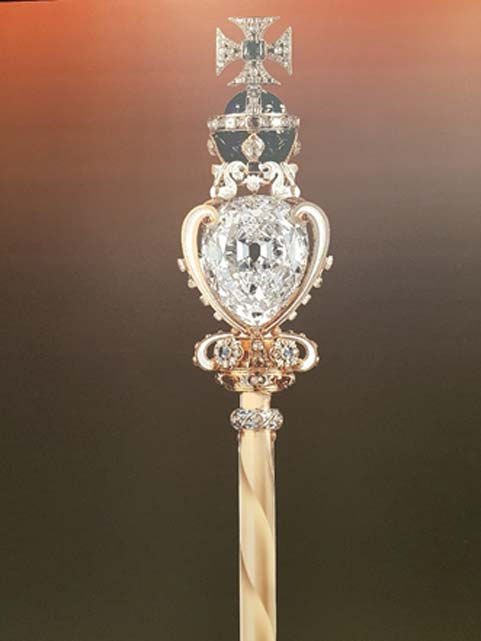
The Cullinan I / Star of Africa, set in the Imperial Sceptre of Britain (Cullinan Mine Archives)
The remaining seven stones were given to the Asscher brothers as payment, however King Edward bought one back for his wife Queen Alexandra and the people of South Africa bought the other six in 1910, when South Africa became a Union, and presented them to Queen Mary.
Today the Star of Africa, delved from the dark depths of the African earth, sparkles its awesome wonder in the sceptre and crown of the British Queen Elizabeth II.
The official portrait of Queen Elizabeth II taken by Cecil Beaton after her coronation in 1953. She is wearing the Imperial Crown, with the Lesser Star of Africa. ( Cullinan Mine Archives )
The town of Cullinan retained its Victorian charm and the mine changed ownership. In 2008 it was sold by De Beers to Petra Mining. There is still 45 years of kimberlite left to mine.
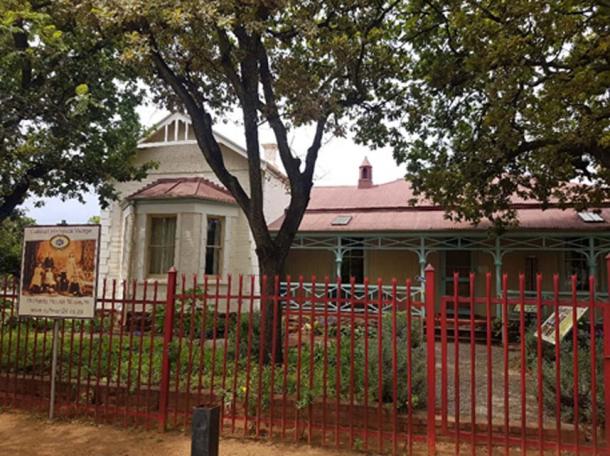
The McHardy House Museum is one of many examples of Victorian houses in the picturesque town of Cullinan (Image: Micki Pistorius)
Related Post
A shocking documentary proves that mermaids do exist
SHOCKING Revelation: Thuya, Mother of Queen Tiye, Was the Grandmother of Akhenaten and Tutankhamun—What Ancient Egyptian Secrets Did She Leave Behind?
Breaking News: Astonishing Discoveries at Karahan Tepe Confirm an Extraterrestrial Civilization is Hiding on Earth, and NO ONE Knows!
Breaking News: Researchers FINALLY Discover U.S. Navy Flight 19 After 75 Years Lost in the Bermuda Triangle!
NASA’s Secret Investigation: Uncovering the Astonishing Mystery of the UFO Crash on the Mountain!
Explosive UFO Docs LEAKED: Startling Proof That Aliens Ruled Ancient Egypt!

